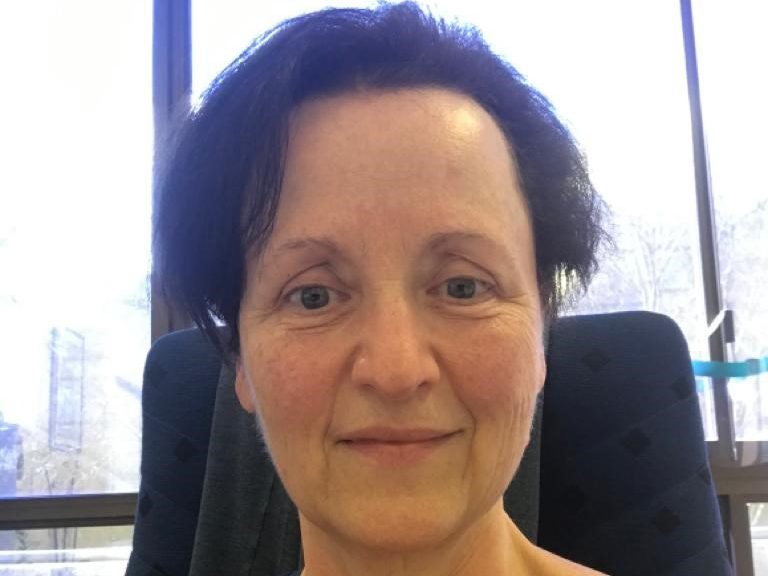click to dowload our latest edition
CLICK HERE TO SUBSCRIBE TO OUR NEWSLETTER


Published
4 years agoon
We were preparing for the pandemic to hit us, and had anticipated that in the worst-case scenario, we could have hospital beds in our reception area, and a tent in our parking lot reminiscent of Italy.
The hospital had been restructured into red areas (confirmed COVID-19), yellow areas (possible COVID-19), and green areas (non-COVID-19). I had drawn up the staging and treatment protocols, the donning and doffing protocols, and the intensive care unit (ICU) triage flowchart that would determine who would get an ICU bed and/or ventilator if we were overwhelmed.
The first admissions were towards the end of March. These patients had fairly mild COVID-19, and were all discharged. They were the beginning of the learning curve for the doctors and nurses who had to come to terms with a novel virus causing a new disease.
There was a lull in admissions for a few weeks, and the trickle became a steady stream and then a deluge. The weekend of 10 July felt as if all the dire predictions would come true. We were working through the night, sleeping when we could in our offices, seeing large numbers of patients, and admitting more than ever before.
A number of patients were desperately ill, and several were using high-flow oxygen with a few on ventilators. Rounds were interrupted by calls for resuscitation, and we had become inured to the calls that reported another demise.
At that stage, there were 90 patients housed in a dedicated COVID HC/ICU, three full general wards with spill over into a fourth, and a ward plus ICU for patients under investigation. The hospital was using about 2 000kg of oxygen a day, and concern was raised that South Africa would run out of oxygen.
We were more stressed and anxious than we had ever been before. Our patients were very ill, and weren’t following the usual course of any disease. COVID-19 is an unpredictable disease involving many different systems and causing bizarre complications.
We started working in teams early on: one person in personal protective equipment in the red area examining the patient while the other is in the yellow area analysing blood results, vital signs, and checking medication. This makes the rounds more efficient, and allows treatment decisions to be made jointly so that there is a surety that all bases are being covered.
We have a cardiologist attached to our team whose expertise we make full use of. We have called on neurologists and nephrologists. We have relied on surgeons, cardiothoracic surgeons, and ear, nose and throat specialists.
Our psychiatrist has provided invaluable guidance for the management of the anxiety our patients feel, and to help with the delirium that COVID-19 can cause. Our physiotherapists have united into a team, and our dietician has addressed the patient’s nutritional needs. The medical staff are working as a cohesive team to best address the patients’ needs and support each other.
We have become calmer and more comfortable with COVID-19 after seeing so many cases. I believe that Linksfield Hospital has dealt with upward of 550 cases.
We were fortunate in that we could draw on the experience of the intensivists overseas who faced this first. We know which drugs to use when, and are very proactive having instituted the use of corticosteroids from inception.
We belong to the ICU corona group where a myriad of physicians involved in intensive-care work voice concerns, ask for advice, and share knowledge. We are guided by Professor Guy Richards, the emeritus professor of the ICU at Johannesburg Hospital. He drew up the treatment protocol, and is a phone call away for advice or reassurance.
We have a unique patient population who are older than in any other hospital in Johannesburg. In line with the published data, we have seen attrition in this age group. Many of our patients have multiple comorbidities.
We quickly realised that obesity is the most significant risk factor in younger patients, and that our older patients with diabetes and hypertension are truly at risk.
We celebrate the patients who survive, and mourn many of the patients who die. When we are overwhelmed by the number of death certificates that we are completing, we do an analysis and are reassured that in spite of our patient demographics, our mortality is lower that the projected figure.
Gauteng has passed the peak, and the numbers have lowered. We currently have 30 patients who occupy two wards and several HC/ICU beds. We are using 1 000kg of oxygen only. The non-COVID-19 patients now outnumber those who are COVID-19 positive. Strict screening remains, and all staff wear masks and visors to afford protection to our patients.
And so, we are left wondering if we are in the eye of the storm or through the worst, knowing that behaviour will determine whether we have a second, more devastating, peak or not.
